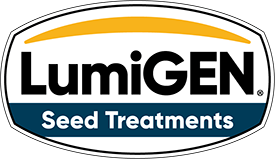Integrating Genetic Resistance and Seed Treatments for SCN Management
Agronomy Research Update from Pioneer Research & Development
Agronomy Research Update from Pioneer Research & Development


ILEVO® is a registered trademark of BASF. Components of LumiGEN™ technologies for soybeans are applied at a Corteva Agriscience production facility, or by an independent sales representative of Corteva Agriscience or its affiliates. Not all sales representatives offer treatment services, and costs and other charges may vary. See your sales representative for details. Seed applied technologies exclusive to Corteva Agriscience and its affiliates.
The foregoing is provided for informational use only. Please contact your Pioneer sales professional for information and suggestions specific to your operation. 2017-2018 data are based on average of all comparisons made in 47 locations through December 1, 2018. Multi-year and multi-location is a better predictor of future performance. Do not use these or any other data from a limited number of trials as a significant factor in product selection. Product responses are variable and subject to a variety of environmental, disease, and pest pressures. Individual results may vary.
Pioneer® brand products are provided subject to the terms and conditions of purchase which are part of the labeling and purchase documents.
Authors: Julie Abendroth, Global Biology Leader - Integrated Seed Solutions; Don Kyle, Soybean Breeder; Justin Gray, Senior Research Associate; Li Feng, Research Scientist/Statistician.